Lionel Messi’s move away from PSG has been the talk of the town in recent weeks.
Barcelona struggled to bring the Argentine back to his boyhood club with the tight grip of Financial Fair Play.
Conversely, a move to Saudia Arabia would have been financially lucrative for the seven-time Ballon d’Or winners.
In the end, Messi decided to move to the MLS and sign for Inter Miami, with a deal reported to be around $54 million USD per season.
It is no secret that Inter Miami has been the brainchild of MLS pioneer David Beckham.
Beckham has been looking for a superstar to lead the way and revolutionise football in Miami for some time, both for financial and footballing reasons.
“I think Miami needs a star,” Beckham was quoted saying all the way back in 2018.
“Miami would expect us to bring in a star.
That’s what we plan on doing.”
Besides the marketing and business aspect of the move, at 36 years of age this year, Messi will be looking to bring his experience and talent to help Inter Miami in the MLS grab a proper foothold in the Eastern Conference, currently sitting bottom in 15th place.
With previous manager Phil Neville having been sacked just weeks ago, it will remain to be seen who replaces the English manager, and how Messi will fit into their plans.
What is for sure is that the Argentine will be the team’s heartbeat and will undoubtedly play a pivotal role for Inter Miami for the rest of their campaign.
This Messi tactical analysis will be a team scout report, taking an in-depth look at how Messi will fit into Inter Miami’s tactics this season.
More specifically, the analysis looks at how Messi has been used by Christophe Galtier at PSG, how Lionel Scaloni managed to get the most out of him for Argentina, and how might the next manager for Inter Miami utilise the same strategies to implement Messi into their tactics in MLS.
Replicating PSG’s approach
Messi has undergone several positional changes throughout his career.
Breaking through originally under Frank Rijkaard at Barcelona as a fleet-footed right winger, he danced his way through the opposition.
Later, under Pep Guardiola, in order to get Messi into the more potent and dangerous positions in and around the opposition penalty box area, he was brought into more central areas.
At PSG, Galtier has experimented with different formations to accommodate for his star-studded lineup and often deployed Messi as part of a front two, or a narrow front three, with the intention of getting his star player in central areas around the pitch.
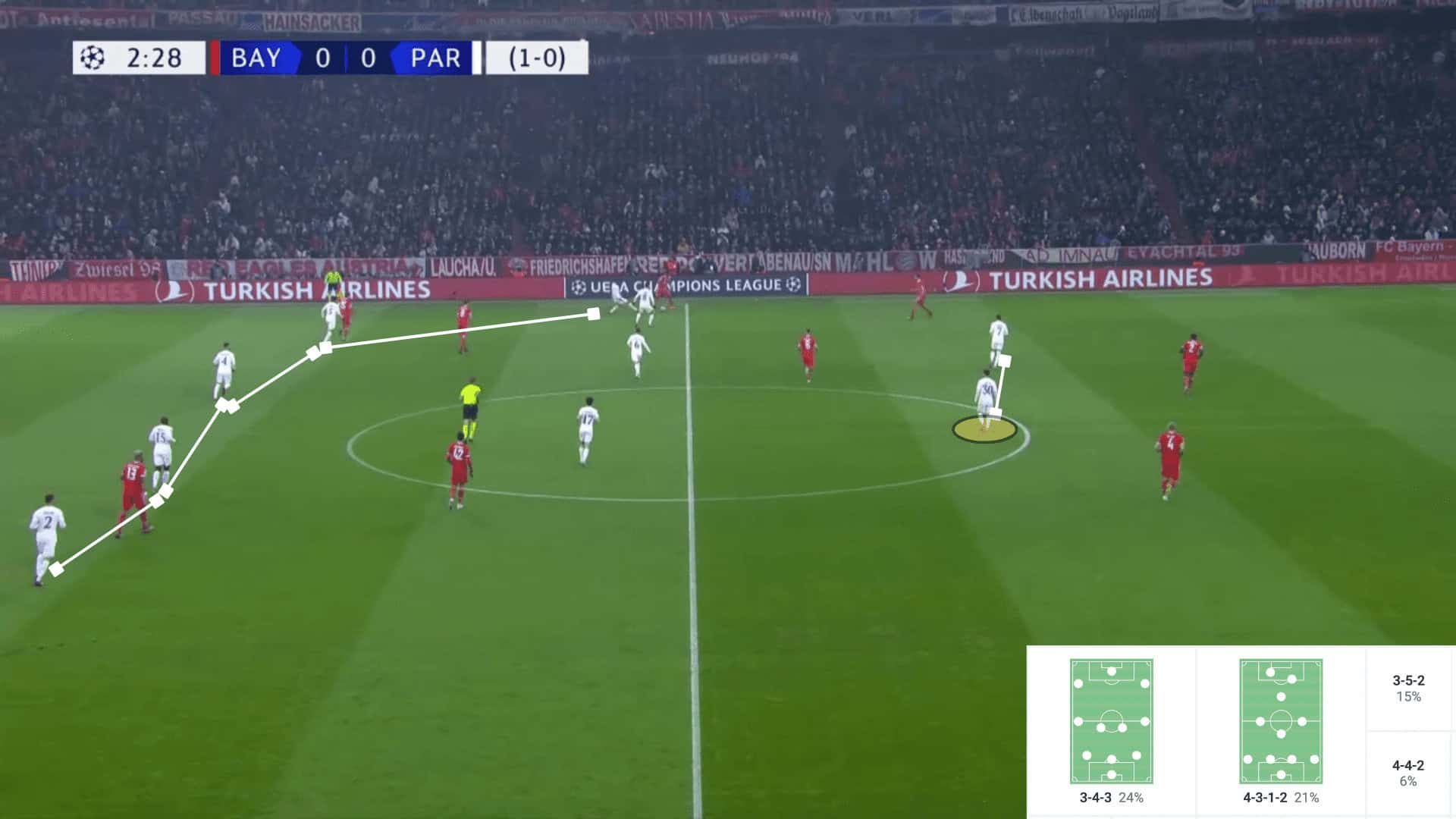
It’s understandable that Messi is often relieved of most defensive duties at this point in his career, especially given the Argentine’s incredible offensive output.
Whether PSG set up in a 4-4-2 diamond, or 3-4-2-1 formation, it is clear that the tactics behind Galtier’s implementation of Messi are to get him on the ball as often as possible in dangerous areas of the pitch to get the most out of him.
Against good opposition, this often means PSG leave Messi high up the pitch to conserve his energy when the team is defending.
This leaves the rest of the team sitting deep and defending with one less player.
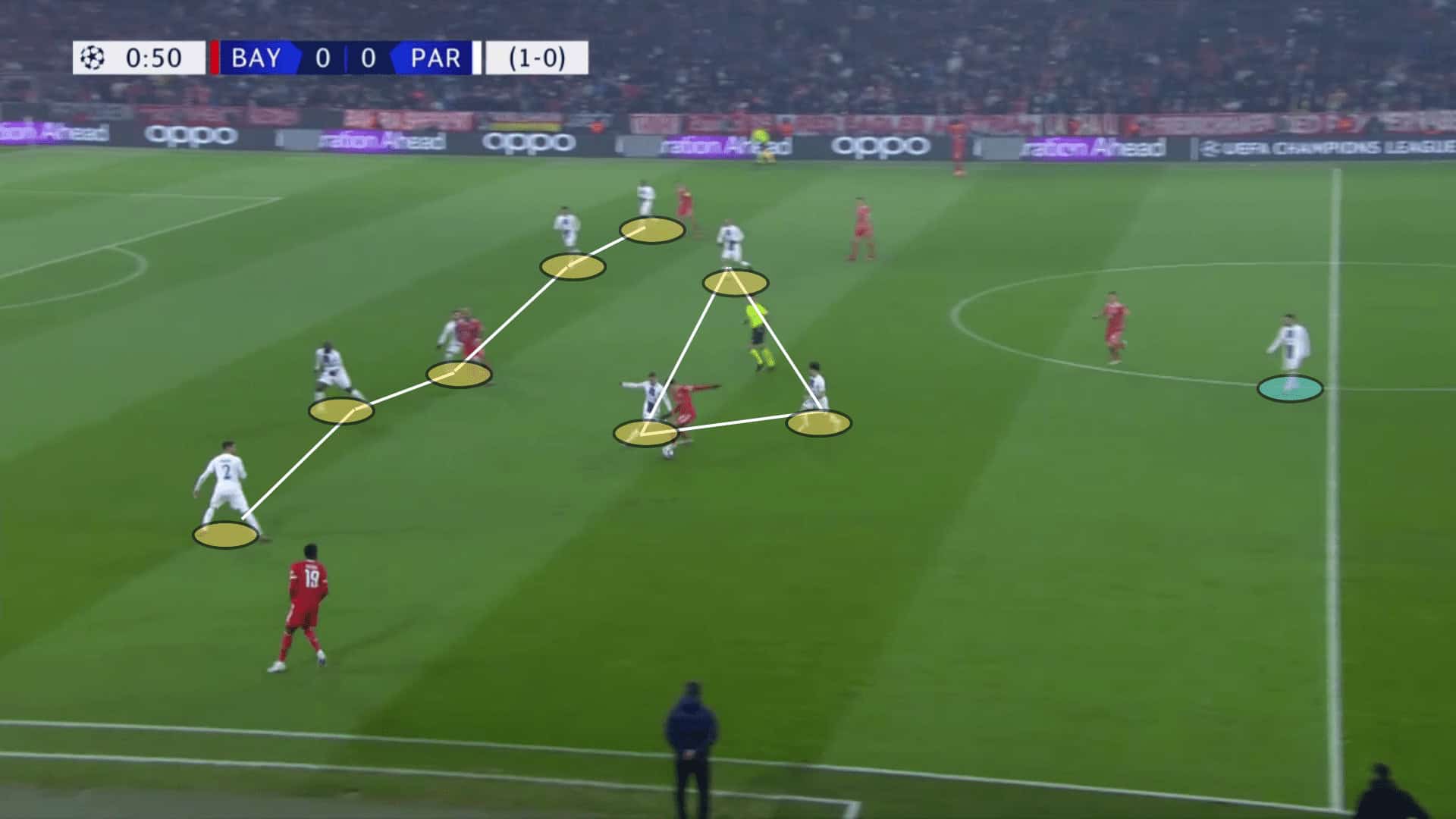
Against teams of are susceptible to the press, Galtier was not against asking more from his forward.
At times, PSG does press from the front, albeit not with the intensity of some other ‘rock and roll’ teams like Liverpool or Bayern.
Messi will often engage the centre-backs and force them to play to one side, shuttling the ball towards his teammates, where their more physically imposing and energetic playing style lends to more success in the defensive action.
Inter Miami could ask Messi to do a similar role, but it requires a lot more support from players around him as his area of pressing is quite narrow and lacks intensity.
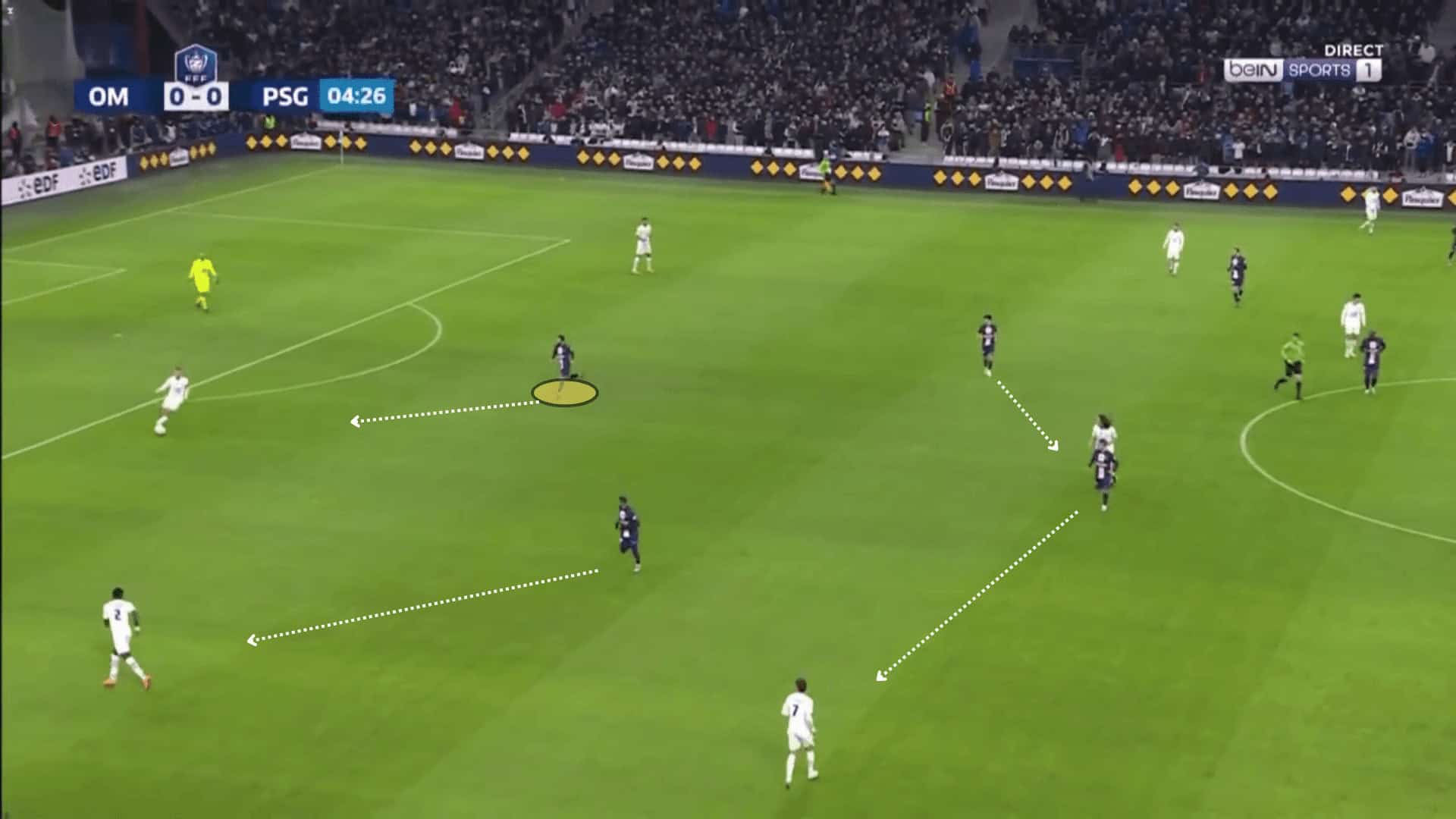
Going forward, Galtier looked towards the World Cup winner to impact the team and get on the ball.
This season especially, Messi was given the freedom to pick the ball up in different areas of the pitch.
Naturally, given the magnitude of the signing, Messi will likely be afforded this luxury as well at Inter Miami.
When looking at how PSG does this, it is evident there is much more fluidity in the players’ positions, potentially to accommodate Messi gravitating towards the ball to impact games.
At times, he will drop deeper into midfield to help support the build-up and get on the ball earlier, especially when opposition teams start higher up the pitch and leave space behind.
Messi has an incredible ability to weigh perfect passes over opposition defences.
When dropping deeper into the midfield, he often drags opposition defenders with him, allowing space for the other forward or willing runners from midfield to exploit the space behind.
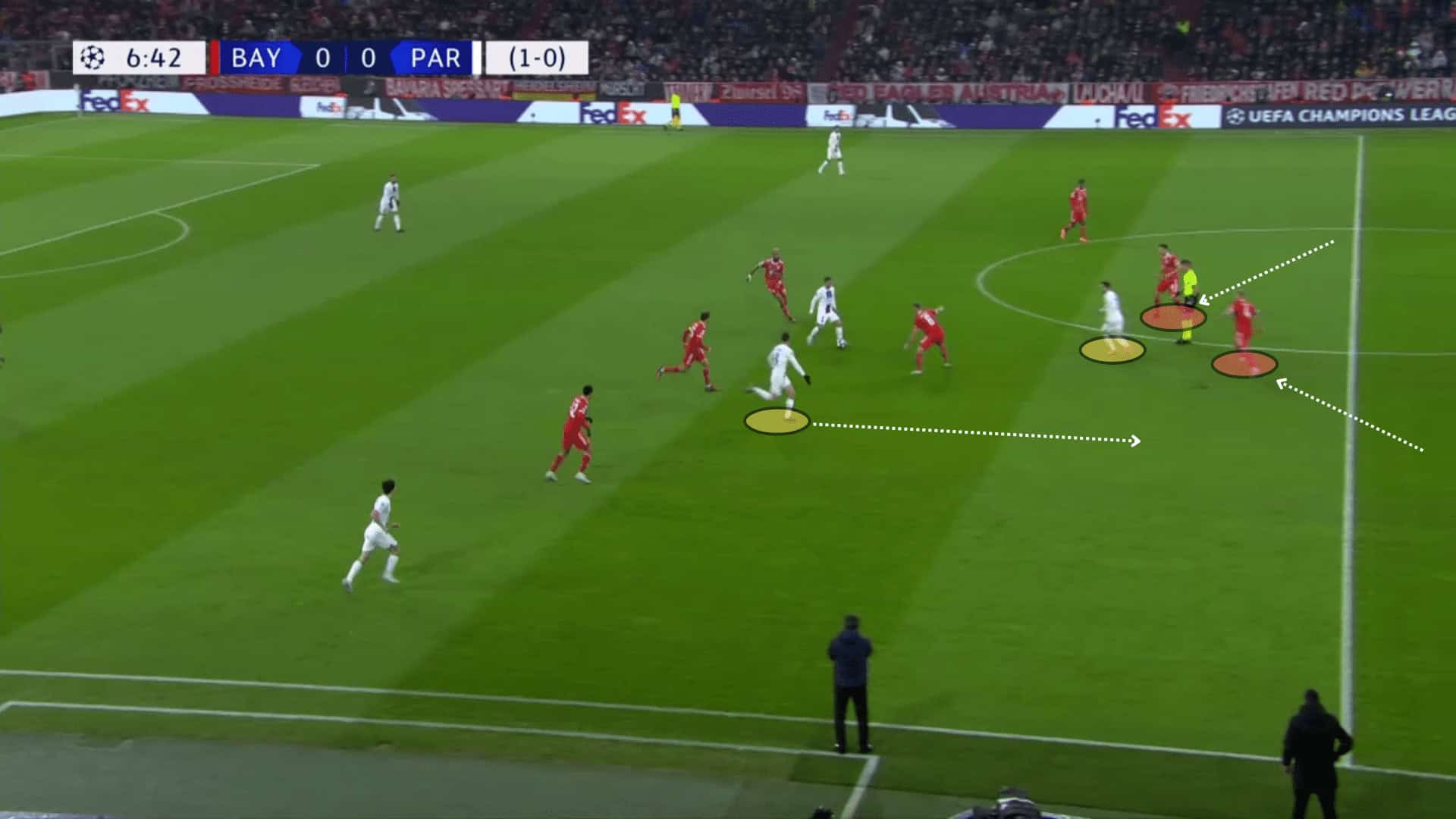
His outstanding link-up play and penetrating passes really become effective and evident when the team is set up around him to cover for his defensive fragilities and support his offensive creativity.
If Inter Miami were to adopt similar tactics to get the most out of their new forward, they would need to have a robust midfield and penetrating runs in behind from wide players.
Lionel Messi Style Of Play For Argentina
After an incredible World Cup tournament in Qatar, during which Messi captained and lifted the trophy in front of millions around the world, many began to take a close look at Argentina manager Lionel Scaloni’s tactics and how he deployed Messi to devastating effect.
Although the strategies for getting the best out of Messi are similar between Galtier at PSG and Scaloni with Argentina, there are notable differences that the new Inter Miami manager will be keen to note.
The first is the formation Argentina uses.
Similarly, Messi lines up in a front two, often dropping slightly deeper to be the creative spark in the side.
However, Scaloni tends to line up with two banks of four, instead of having a back three or three in midfield, effectively forming a 4-4-1-1.
In this manner, it allows Messi to relieve some of his defensive responsibilities when defending deep, allowing him to stay forward.
This is further emphasised in games where Scaloni has opted out of playing wingers in wide areas in midfield and instead employed four typical central players across the middle, just like Argentina’s World Cup semi-final game against Croatia.
When Argentina do press, Julián Álvarez was chosen to play alongside Messi for precisely the energetic enthusiasm needed to compensate for Messi’s defensive actions as well.
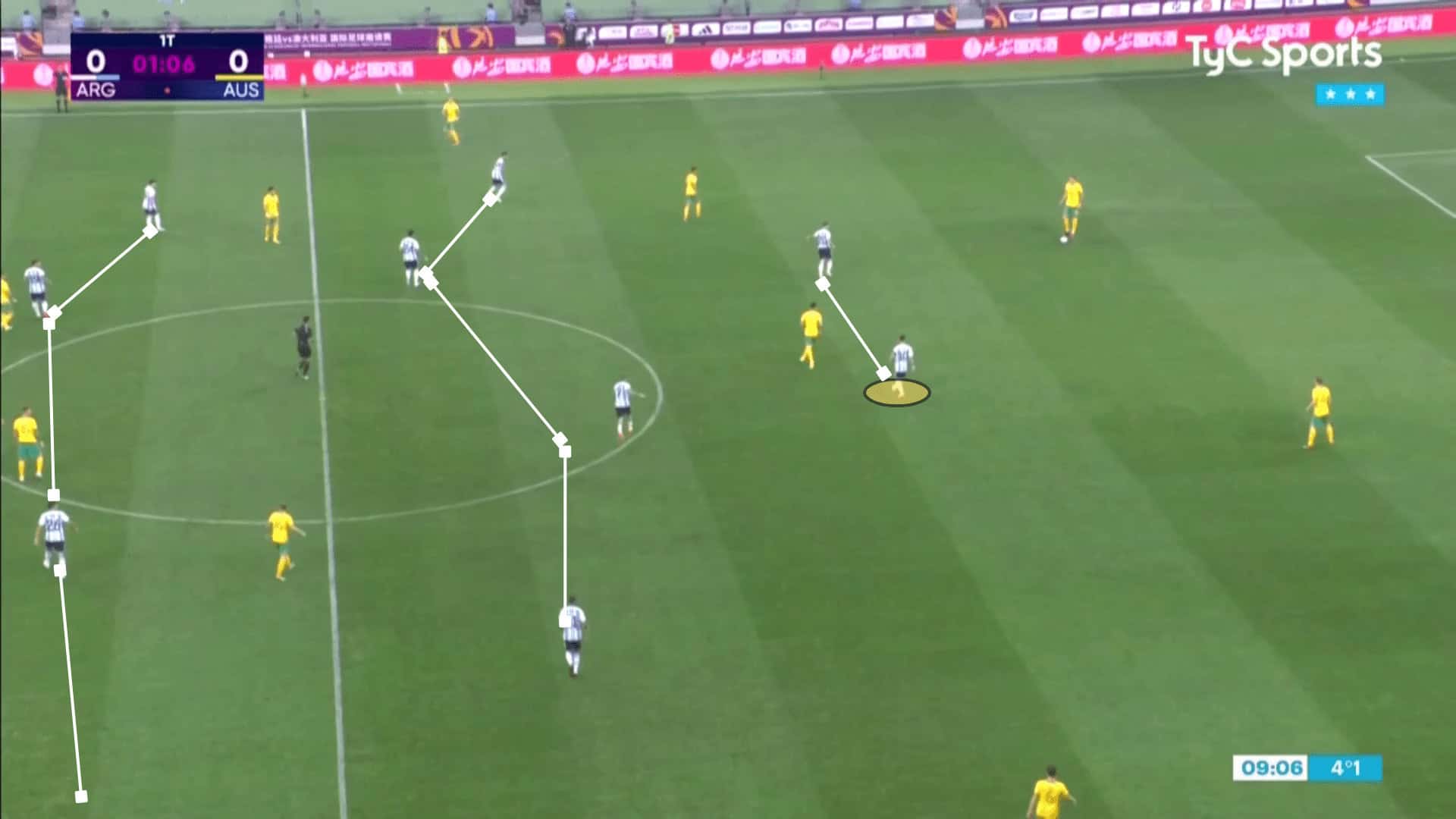
In attack, Scaloni uses Messi in a similar fashion to his club manager.
Wide players (often the fullbacks), stretch the play horizontally and the forwards or one of the midfielders will push up against the opposition centre-backs to maximise vertical space as well.
This creates pockets of space for Messi to drop into and utilise his incredible tactical sense and technical ability to pick defences apart.
Playing alongside players like Álvarez and Alexis Mac Allister was also incredibly beneficial for Messi.
Álvarez in particular is an incredible runner in behind and through channels which is a joy for a player like Messi who can spot runs across the field even under immense pressure from the opposition.
Mac Allister also acted as a foil for Messi to balance the team’s structure when in possession.
When Messi drops deep, oftentimes Mac Allister pushes forward to support Álvarez.
Conversely, when Messi pushes forward in and around the opposition’s defensive line, Mac Allister will drop deep to help facilitate build-up.
Unselfish players will great tactical knowledge allowed Messi to truly flourish for his country and work with him instead of compensating for him.
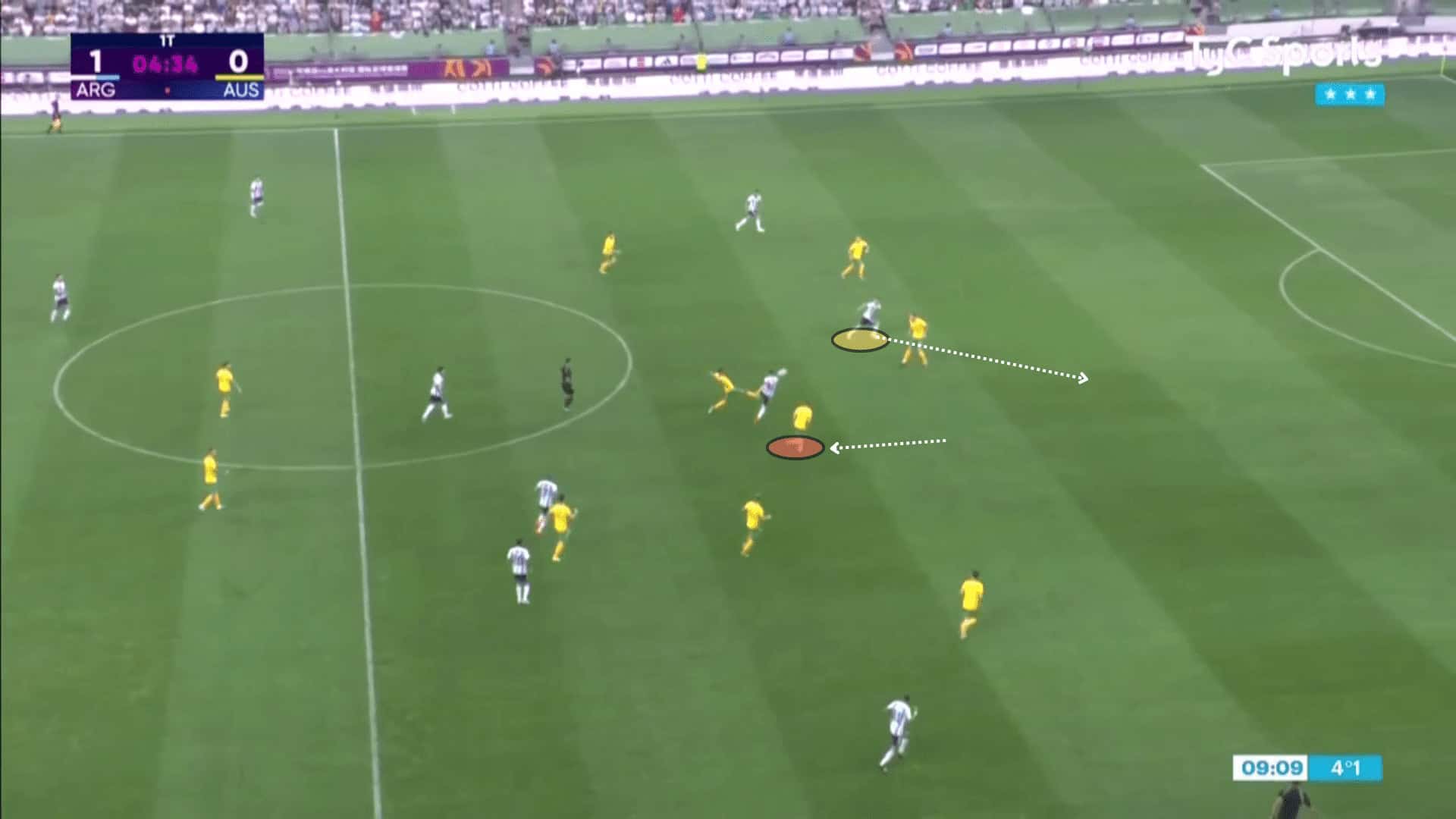
How Messi Fits Into Inter Miami Style of Play
Inter Miami hasn’t had the best of seasons so far in the MLS, currently sitting 15th after 17 games played.
Messi will undoubtedly improve the side, but Inter Miami and interim manager Javier Morales will look to incorporate some of the tactics from his previous club and country to get the most out of the Argentine.
Inter Miami could replicate Messi’s previous club’s formation of a 3-4-1-2 to accommodate Messi behind Leonardo Campana and the recent arrival of Josef Martínez.
However, given their performance this season, it is likely that Inter Miami will remain with a back four, as the Herons have largely adopted a 4-2-3-1 system.
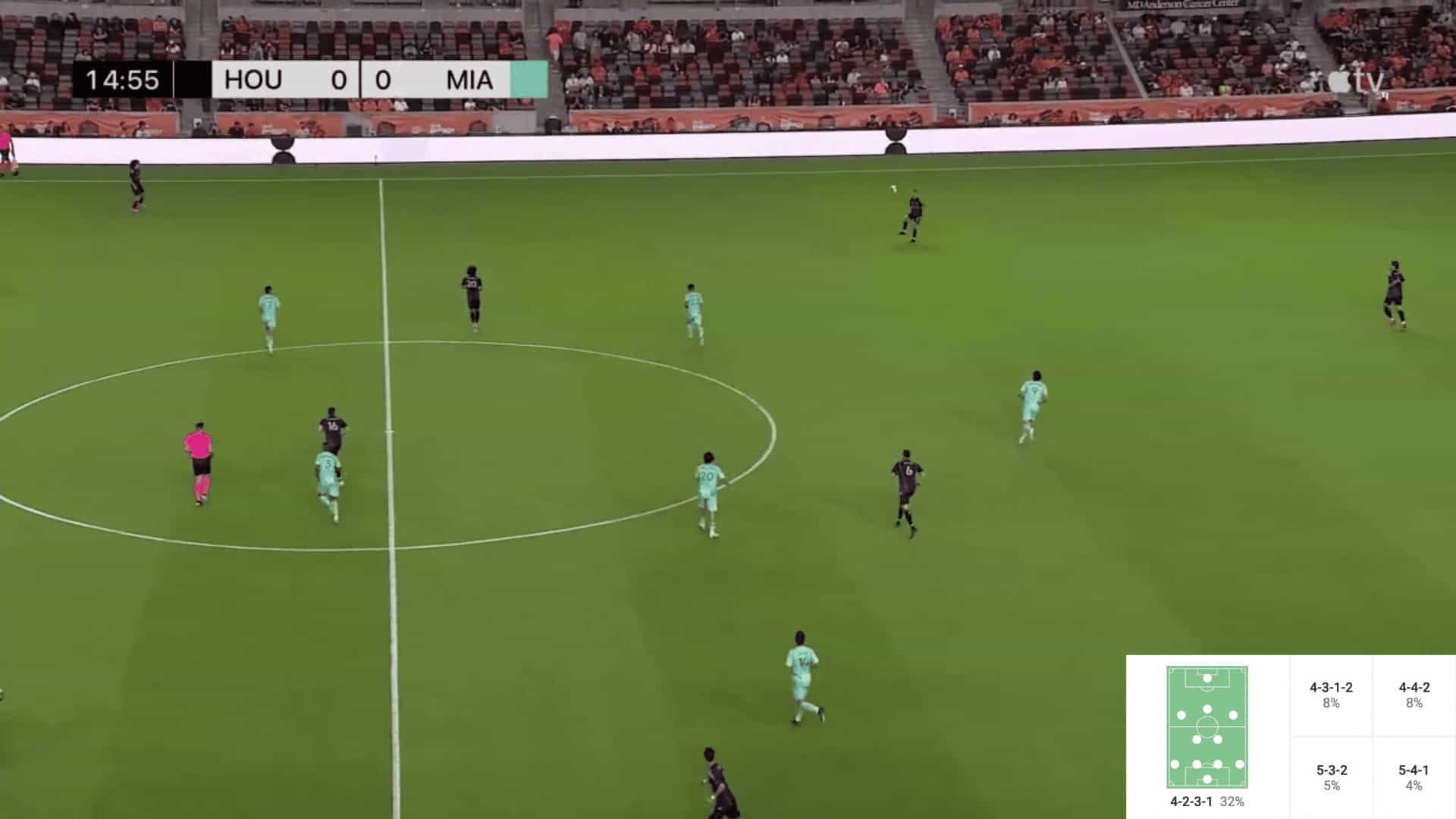
Messi could easily slot into the central attacking midfield area, playing behind just Martínez or Campana.
With this formation, Morales could employ similar tactics to Scaloni’s Argentina, keeping two banks of four in the defensive phase and opening up when they have the ball.
This works exceptionally well with Martínez or Campana, who like to run in behind to stretch play vertically, much like Álvarez does for his country.
Moreover, with the likes of DeAndre Yedlin and Franco Negri at fullback, they are excellent at getting forward and have willing runners to stretch the play wide and make runs in behind.
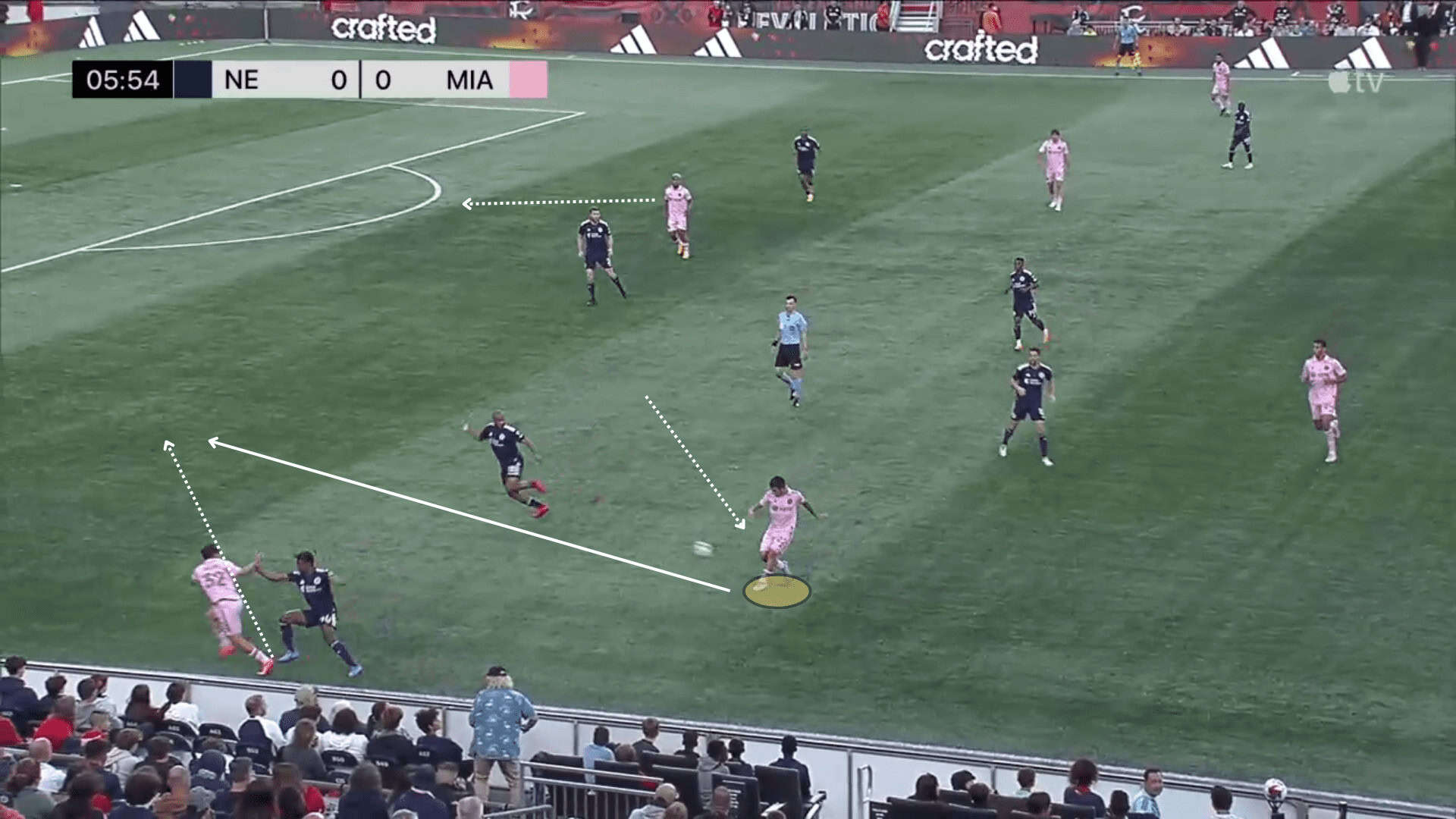
With this tactic, Messi will need support from his midfielders to create space for him in dangerous areas.
At the base of midfield, much of the build-up will be left to Dixon Arroyo and Jean Mota.
Both combine technical quality to pick out passes and defensive resilience to cover a lot of ground.
Homegrown midfielder 18-year-old Benjamin Cremaschi has been getting a lot of minutes as of late and could be used as one of the two wide midfielders who play as a foil to Messi’s movements in and around the opposition midfield.
Nicolás Stefanelli is a fellow Argentine who could operate as the other wide midfielder in the 4-4-2.
He has outstanding technical ability and link-up play, enabling him to utilise the spaces Messi creates and make smart, incisive runs in behind the opposition.
Defensively this would provide a lot of balance for the team, keeping narrow and leaving Messi to play alongside the striker as a two.
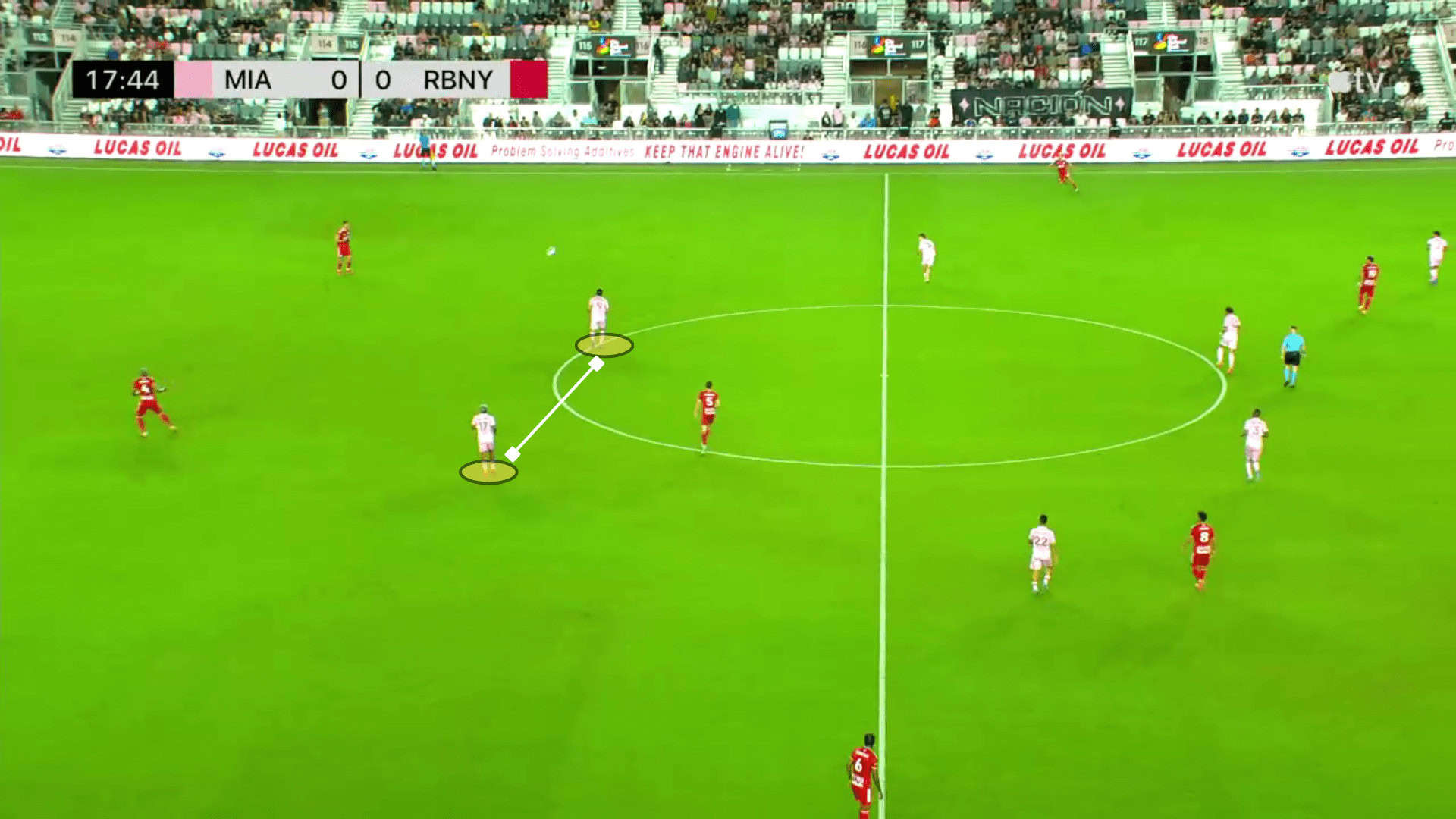
It will be interesting to see which players Morales will choose to play with Messi.
Inter Miami has good squad depth in attacking positions, with Rodolfo Pizarro, Corentin Jean, and Robert Taylor all capable of playing in wide areas or infield.
Perhaps Inter Miami may adopt a more fluid attacking play style, similar to PSG where lots of rotations and movements between wide players and forwards occur to play off the positions in which Messi may drift towards.
Moreover, there is every possibility that Inter Miami will not change their system too much as the season is approaching its halfway mark.
With this, Messi will likely slot into the central attacking midfielder position in the 4-2-3-1.
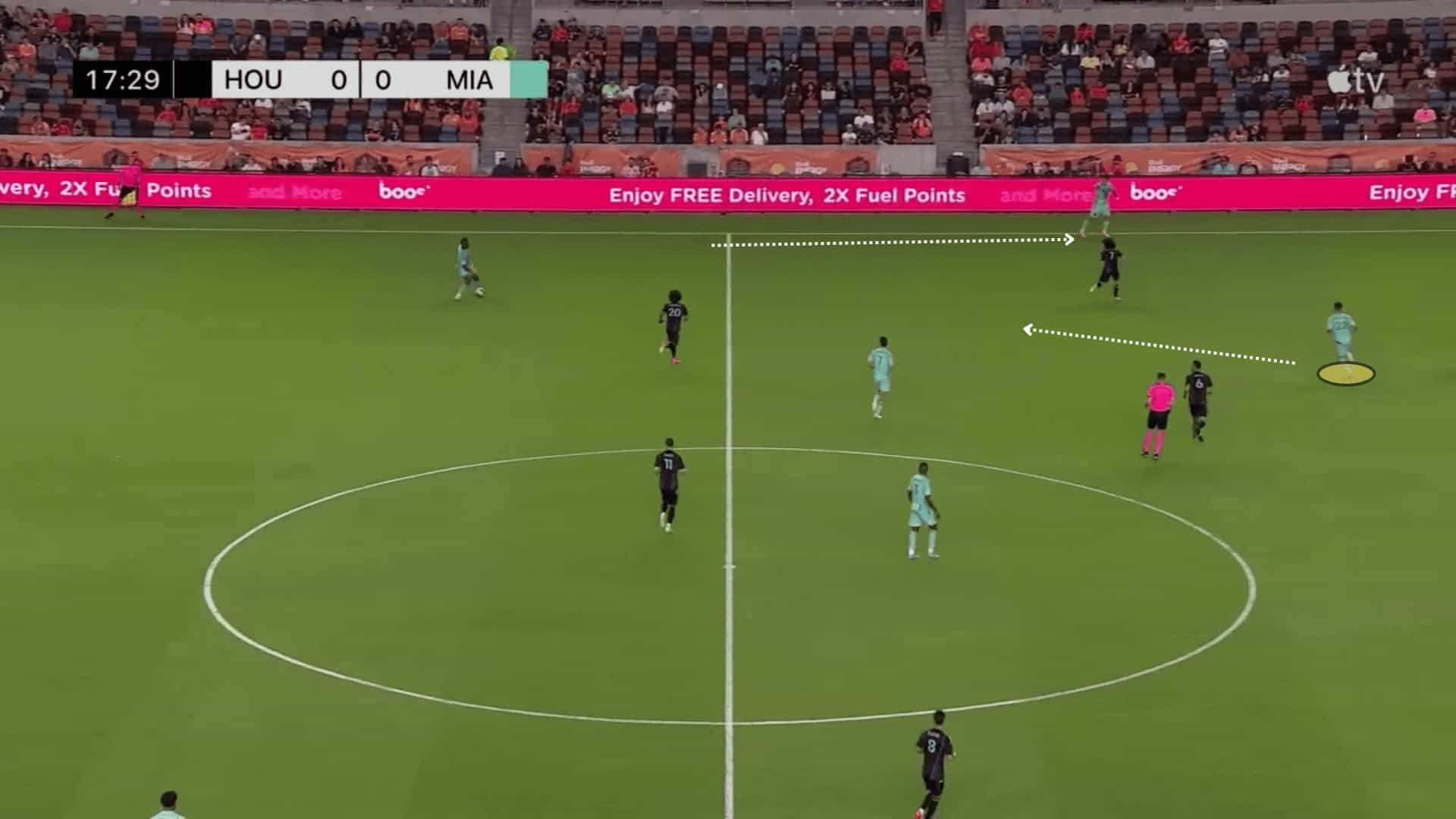
With the way Inter Miami plays, the full-backs, especially Negri, will find joy in stretching the play and having a player like Messi find him in spaces further up the pitch.
Furthermore, the two at the base of midfield may provide enough stability for Messi to roam freely further up the pitch.
The only concern with this tactic would be the defensive aspect
. Miami tends to press in defensive transitions when operating in a 4-2-3-1,and Messi may struggle to provide much help in this department.
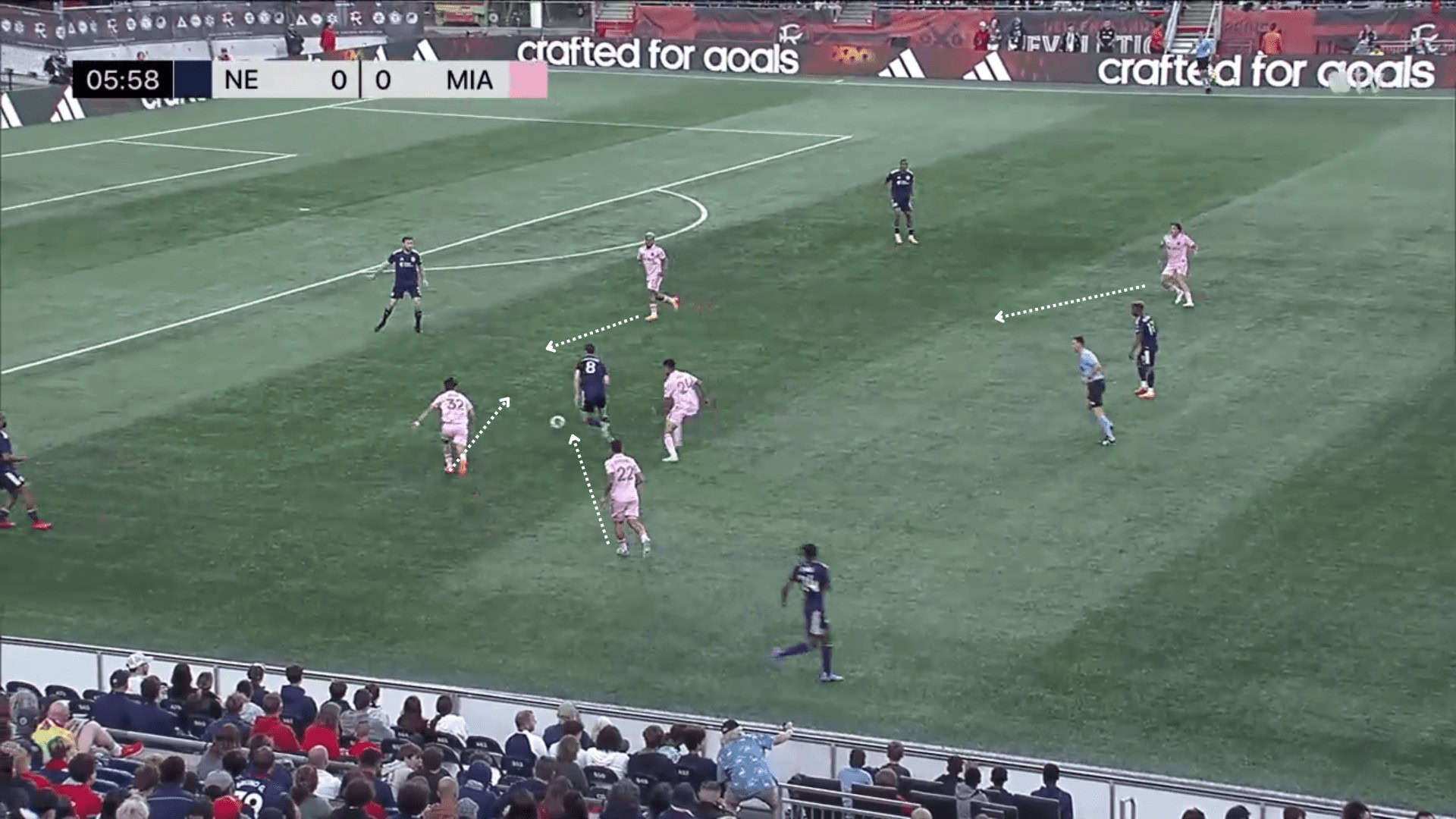
Conclusion
The news of Lionel Messi’s move to Inter Miami has caused a stir in the footballing world.
Inter Miami, owned by David Beckham, has been struggling in the Eastern Conference.
They are currently at the bottom of the standings.
Messi’s arrival is expected to bring much-needed experience and talent to the team and could be a turning point in their fortunes.
In recent years, Messi has primarily played the role of a creative forward whose job it is to help create chances and, at times, support build-up.
What is evident for both club and country is his ability to bring players into the game and create chances for wide players and forwards.
However, simply adding Messi to a struggling side isn’t going to immediately produce wonders.
Inter Miami will need to look to build a team around the Argentine to support his defensive frailties, both of which PSG and Argentina have adapted to in different ways.
With the way Inter Miami play now and the players they currently have, adopting a similar strategy and tactic to how Scaloni has used Messi may be the best strategy forward.
With the likes of Yedlinm and Negri at fullback, as well as the attacking talent of Campana and Martínez to lead the line, Messi’s arrival could be the glue that gels the team together to lift them out of the bottom of the Eastern Conference.





Comments